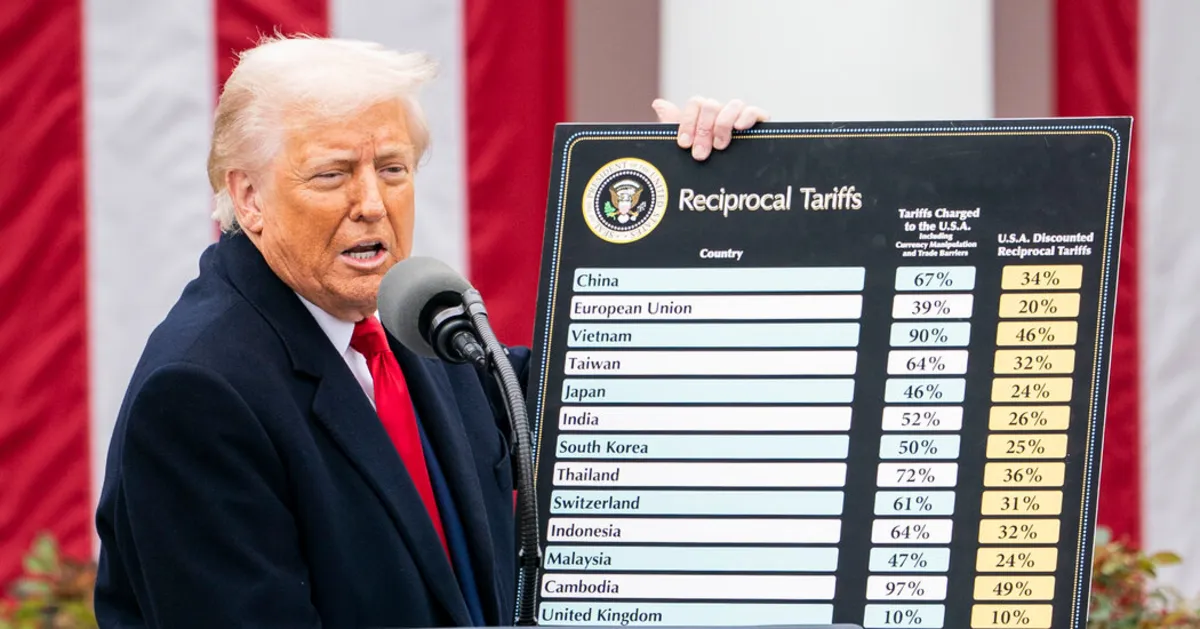
President Trump's recent announcement regarding new tariffs on over 100 countries has sparked discussions about the implications for international trade. The central concept behind this tariff strategy is the trade deficit, which is defined as the difference between the value of imports and exports between each country and the United States for the year 2024. The formula applied by the Trump administration is straightforward, yet it raises questions about its effectiveness and fairness.
The tariff calculation uses a one-size-fits-all formula that applies the same mathematical principles regardless of the economic context of the countries involved. Trump has claimed that these tariffs will help reduce trade imbalances and create a more level international trade environment. However, the bluntness of this approach overlooks critical factors, such as the specific trade barriers each country possesses and the reasons behind the trade deficits.
One notable aspect of the tariff calculation is that the Trump administration focused solely on goods—tangible items that can be shipped—while excluding services such as technology, media, banking, and tourism. For instance, a DVD counts as an export, but a Netflix subscription does not. This exclusion benefits countries like Bermuda, which primarily exports financial services to the U.S. Under the current calculation, Bermuda pays a modest 10 percent tariff. However, if services were included, that rate would soar to 37 percent, illustrating the potential impact of this choice on tariff outcomes.
Conversely, many of America's trading partners, particularly in the European Union, face higher tariffs due to the exclusion of services. The U.S. imports more goods from the EU than it exports, yet it sells more services than it purchases from them. If services were factored into the trade deficit, the tariffs on the EU could decrease by almost half, reflecting a more nuanced understanding of trade relationships.
The Trump administration's reliance on 2024 data to calculate tariffs raises concerns about the consistency of these figures. Trade deficits can fluctuate significantly from year to year. For instance, in 2024, the U.S. exported more to Saudi Arabia than it imported, while the reverse was true in 2023. Similarly, Bolivia presented a trade deficit in 2024 but had a surplus in the previous year. By using the most recent data, the tariffs may not accurately reflect each country's trade barriers and economic conditions.
Had the administration opted to consider the average trade deficit over the past five years, the impact on tariffs would be minimal for large economies. For example, China's tariffs would increase by only one percentage point, while the EU's would also shift slightly. However, for smaller nations, this decision could lead to significant differences. Countries like Equatorial Guinea, which had a minimal trade deficit in 2024, are receiving favorable tariff treatment compared to previous years when their deficits were much larger.
The Trump administration established a blanket 10 percent minimum tariff for all countries, affecting at least 100 nations that import more from the U.S. than they export. This approach results in countries with a robust trade surplus, such as Australia, facing the same tariff as nations with significant trade deficits like New Zealand. This uniformity raises questions about the appropriateness of the tariff rates given the disparities in trade relationships.
Several arbitrary choices within the tariff formula further complicate the landscape. One of the most significant decisions was to divide the calculated tariff rate by two, which President Trump described as a gesture of kindness. However, this choice could have varied widely; a different divisor could have resulted in much higher or lower tariffs. Additionally, the formula incorporates variables meant to approximate the price elasticity of import demand and the tariff pass-through to retail prices, but the specific numbers chosen effectively nullify their impact on the final tariff rate.
While the new tariffs apply broadly, some countries are exempt, including Canada and Mexico, which are involved in separate negotiations. Additionally, China faces new tariffs on top of existing ones, bringing its total tariff rate to at least 54 percent. Furthermore, certain products from Iraq are subjected to a 39 percent tariff, primarily due to its oil exports, even though oil imports themselves are exempt from tariffs.
In conclusion, President Trump's new tariffs are based on a simplistic formula that fails to account for the complexities of international trade relationships. By focusing solely on goods and excluding services, the administration may inadvertently distort trade dynamics, impacting both American consumers and foreign economies.